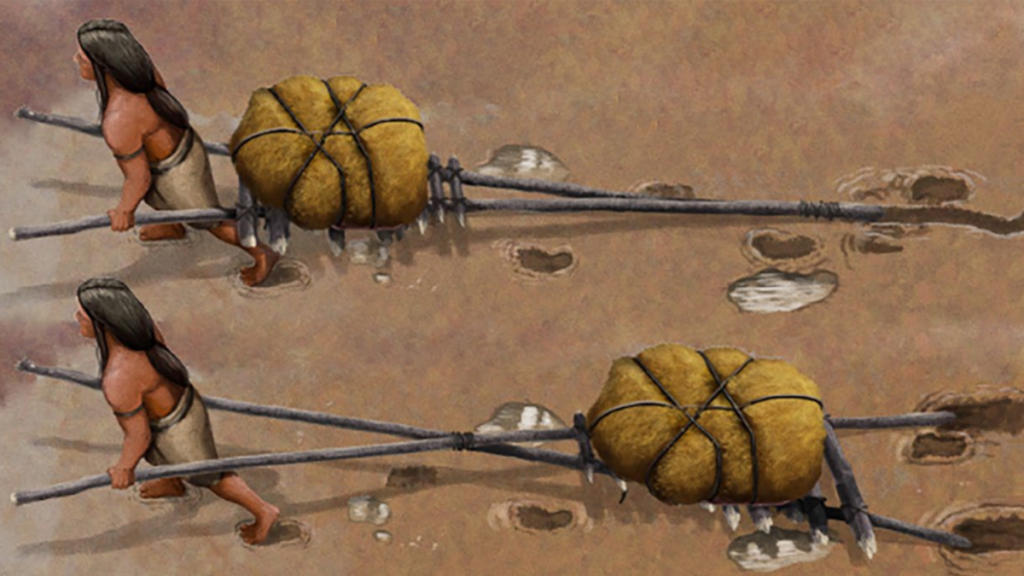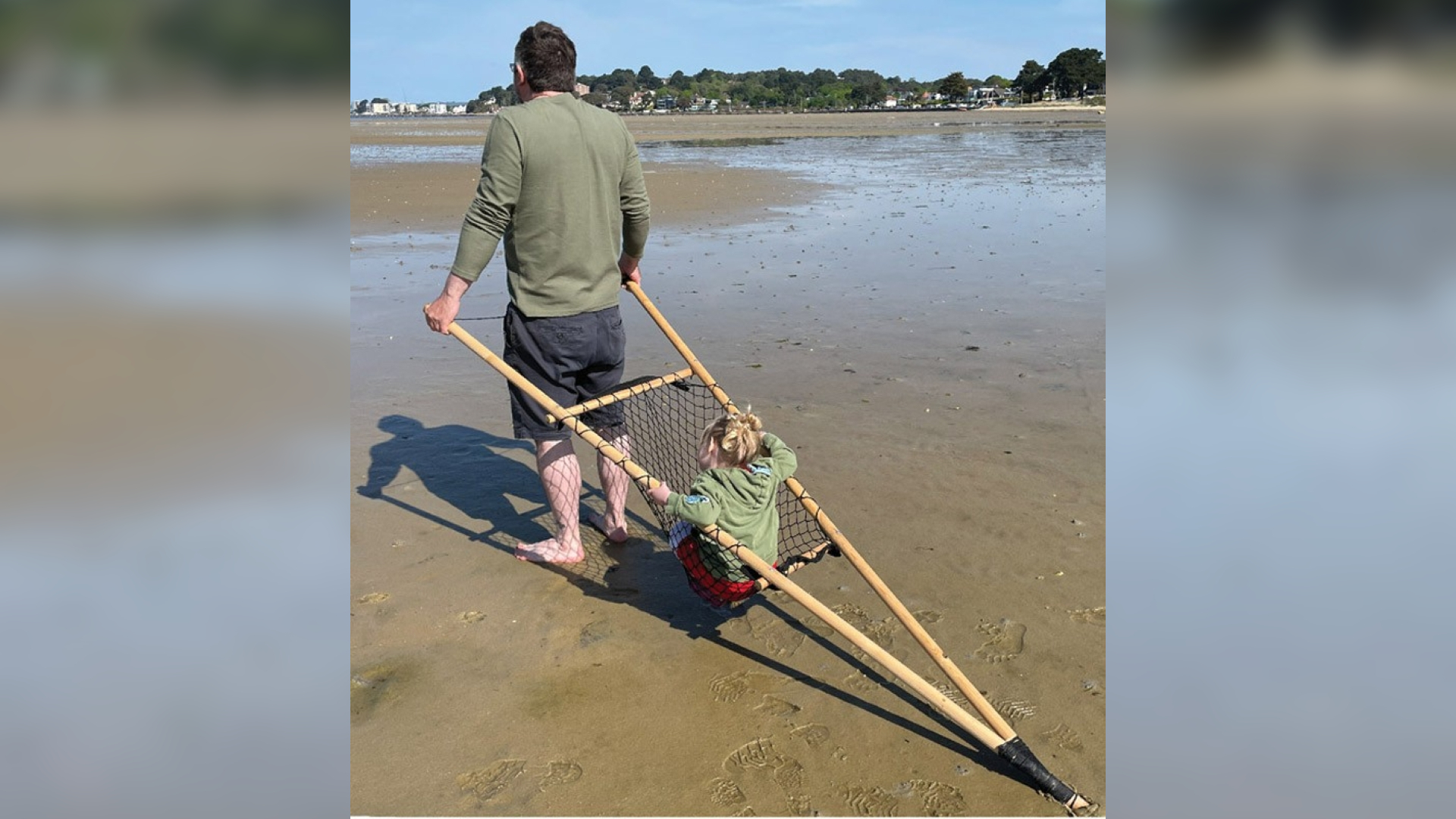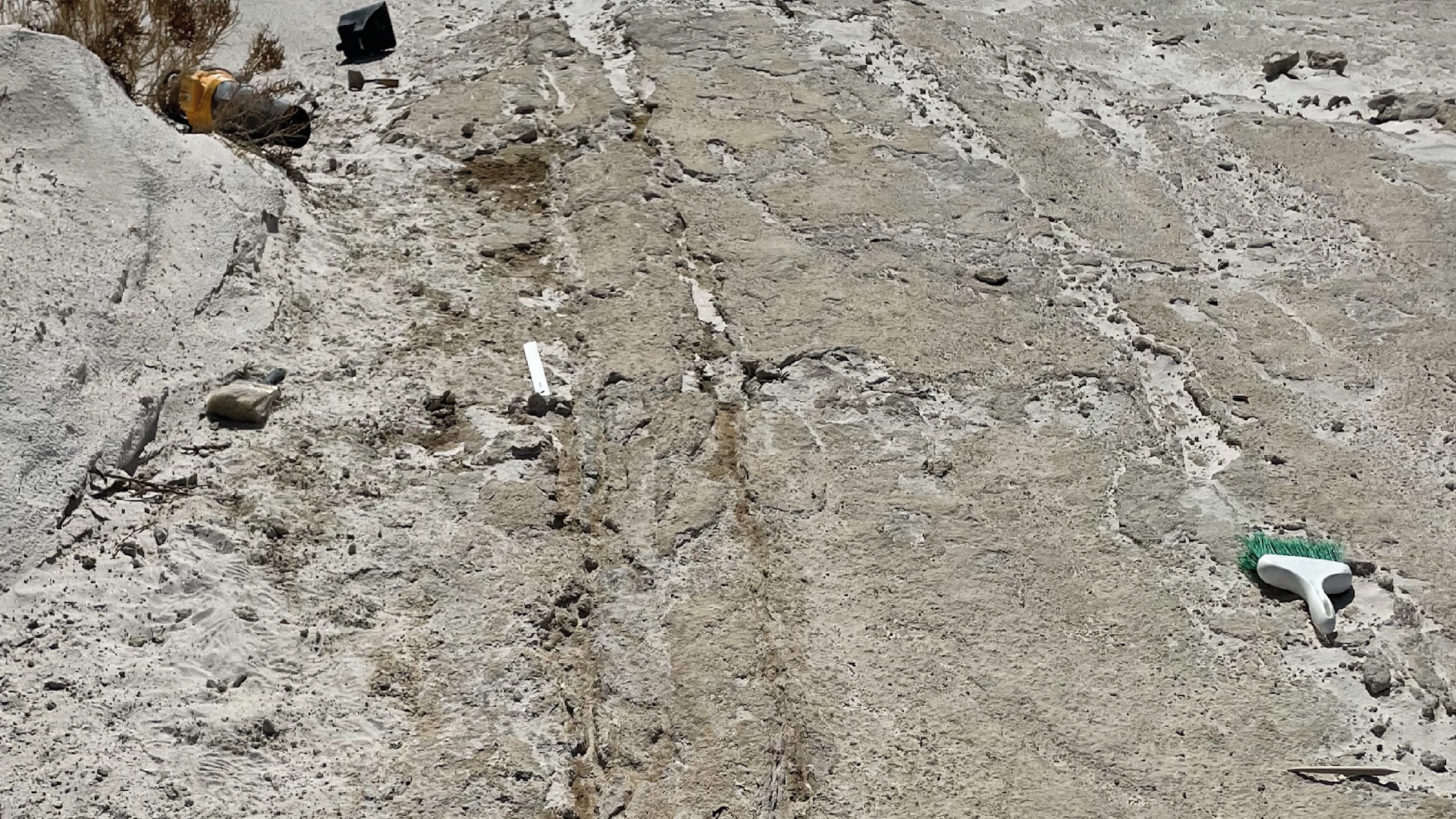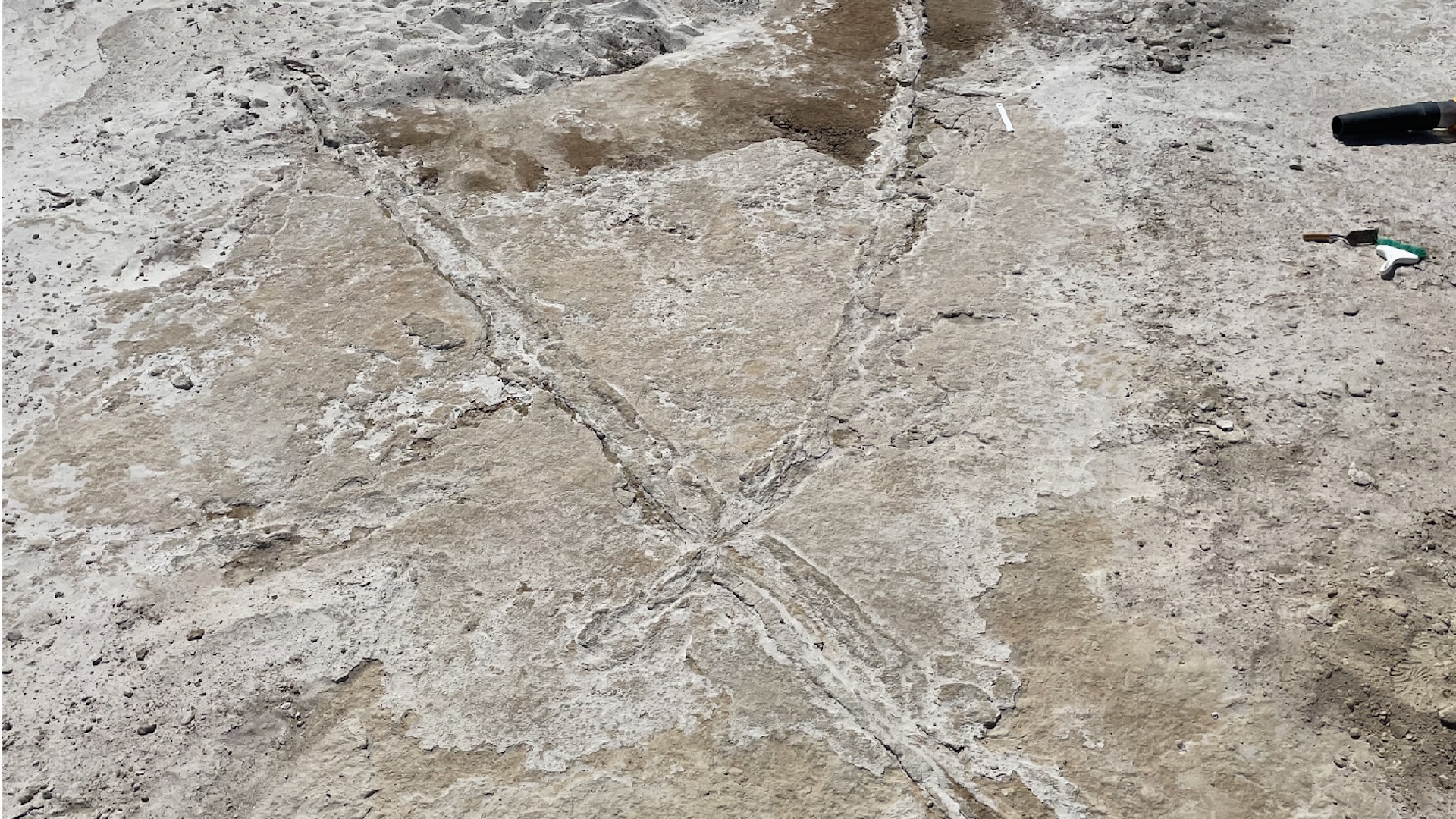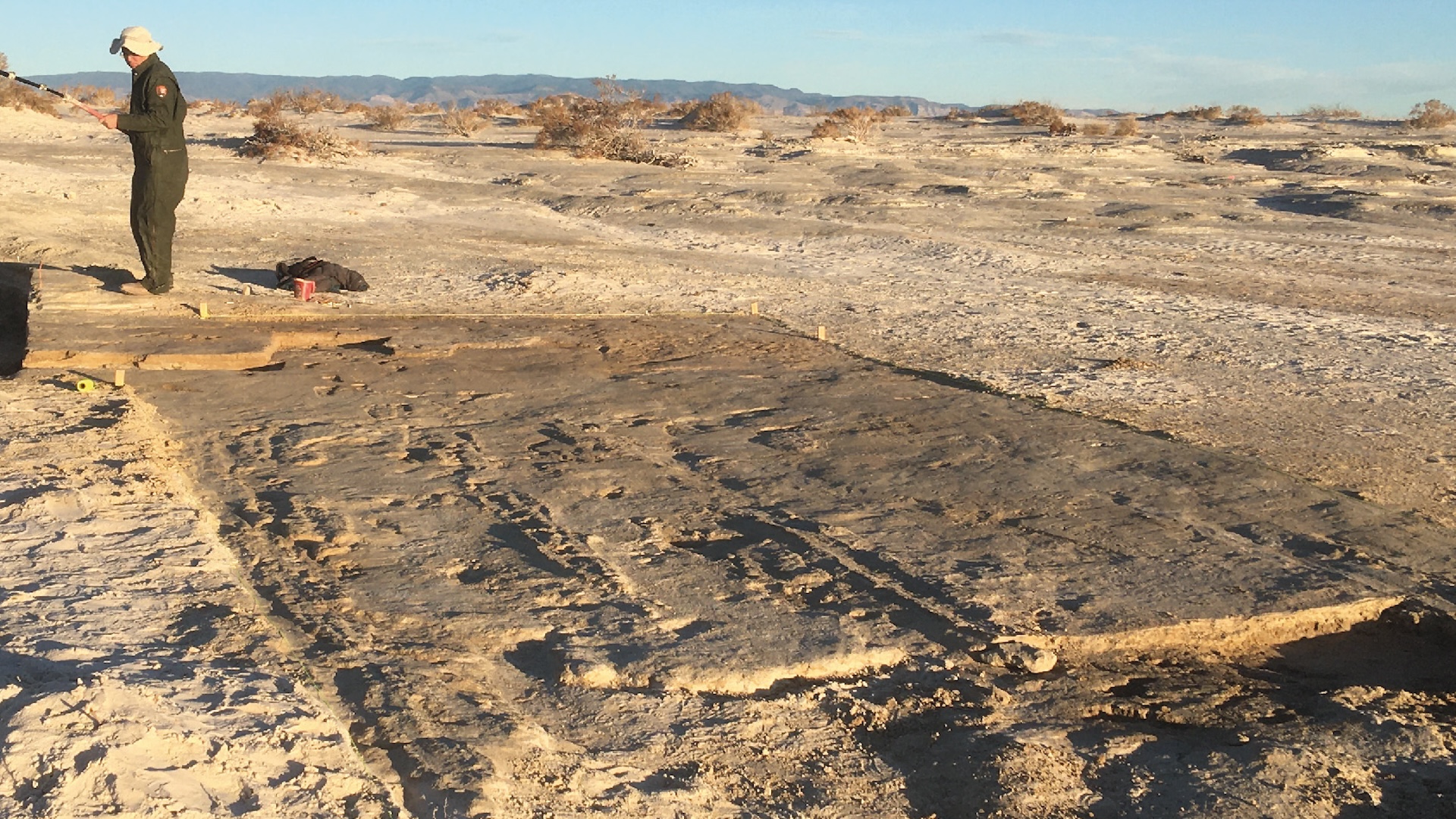The earliest known North Americans used wooden “vehicles” to transport goods, and possibly even people, more than 20,000 years ago, a new study suggests.
Researchers discovered sled-like drag marks alongside ancient footprints at White Sands National Park in New Mexico — potentially the oldest human footprint site in North America.
Indigenous people consulted in the research suggested that the marks were left by some kind of travois, a wooden frame made from two poles bound together, according to the study, which was published in the January edition of the journal Quaternary Science Advances.
Indigenous groups of the Great Plains (which includes part of New Mexico) used travois pulled by dogs (and later horses) to transport their houses, furniture and other possessions at the time of early contact with European colonizers around 500 years ago. Children and older women also rode in them at that time, according to the study. Based on the size and positioning of the ancient footprints found next to the drag marks, adults likely pulled the travois while children followed, the researchers said.
“Many people will be familiar with pushing a shopping trolley around a supermarket, moving from location to location with children hanging on,” study lead author Matthew Bennett, a professor of environmental and geographical sciences at Bournemouth University in the U.K., said in a statement. “This appears to be the ancient equivalent, but without wheels.”
Related: The 1st Americans were not who we thought they were
Bennett noted that researchers know our ancestors must have used something to carry their possessions as they migrated around the world, but these wooden vehicles have since rotted away. The recently discovered drag marks provide the first indication of how prehistoric people moved heavy loads before wheels, he said.
Researchers began excavating the drag marks site in 2020. At White Sands, trackways are preserved in ancient dried mud buried beneath sediment. Many millennia ago, people trudged through this landscape alongside mammoths, giant ground sloths, camels and many other ice age creatures.
The drag marks consist of lines in the ground extending upward of 165 feet (50 meters). Some of the marks were single lines, which could have been made by two poles bound together at the end (A-shaped). In other cases, there were two parallel lines, likely made by two poles crossed in the middle (X-shaped), according to the statement.
Indigenous people of the Great Plains typically used an A-shaped wooden frame with a connection of bars or net-like baskets to hold objects in place, according to the study. The researchers suspected that ancient people in the region did the same. To test their theory, the team made their own travois out of wooden poles and dragged them along mudflats in the U.K. and along the coast of Maine.
“In our experiments, our footprints and lines in the mud from the poles had the same appearance as the fossilised examples that we found in New Mexico,” Bennett said.
Bennett and his colleagues previously dated the human footprints at White Sands to around 21,000 to 23,000 years ago — challenging the previous assumption that humans arrived in North America 13,000 to 16,000 years ago. Not all researchers agree on the site’s age, but the study authors noted that any dating debate shouldn’t distract from these newly identified features demonstrating ancient Indigenous practices, whatever their age.
“Every discovery that we uncover in White Sands adds to our understanding of the lives of the first people to settle in the Americas,” co-author of the new study Sally Reynolds, a mammalian paleontologist at Bournemouth University, said in the statement. “These people were the first migrants to travel to North America and understanding more about how they moved around is vital to being able to tell their story.”
